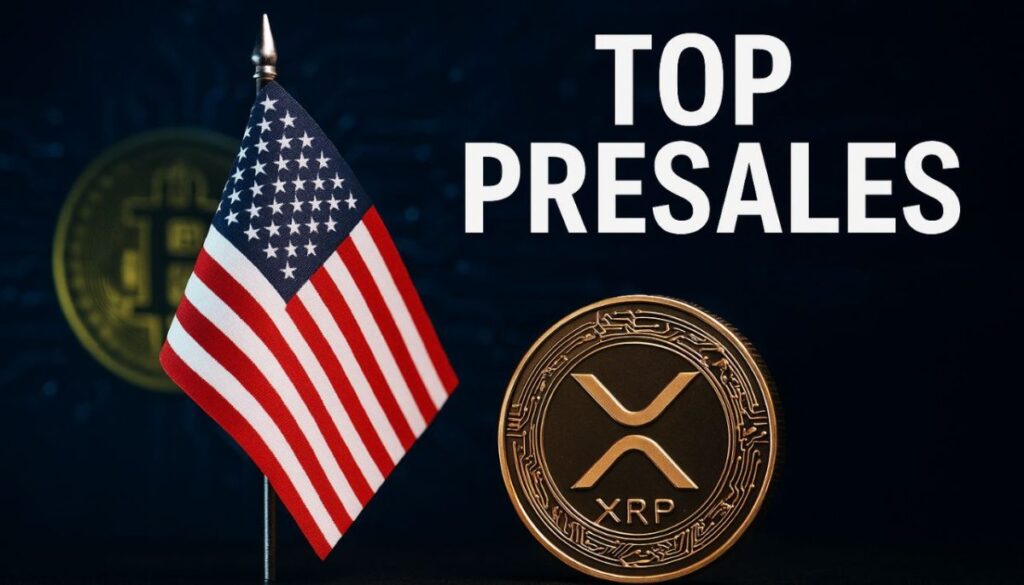In the rapidly evolving world of cryptocurrency, staying informed is key to making strategic financial decisions. As blockchain technology continues to reshape the financial landscape, understanding the implications of recent developments is crucial for investors and enthusiasts alike. One of the pivotal movements in this space is Ripple’s application for a national bank charter, a move that could redefine the future of stablecoins. This guide delves into what this move means for Ripple and the broader crypto market, along with insights into promising investment opportunities.
Ripple’s Bid for a National Bank Charter: A Game-Changer for Stablecoins
Ripple has taken a significant step by applying for a national bank charter with the Office of the Comptroller of the Currency (OCC). Already holding a state-level license from New York’s Department of Financial Services (NYDFS), securing a bank charter would elevate Ripple’s stablecoin, $RLUSD, to an unparalleled status of federal and state oversight. Announced by Brad Garlinghouse, Ripple’s CEO, this strategic move comes in the wake of Circle’s similar application for their stablecoin, USDC.
As the second largest stablecoin, USDC commands a market cap of $61 billion, dwarfing Ripple’s $RLUSD market footprint of $469 million. Yet, Ripple’s potential bank charter could change these dynamics, offering a boost in credibility and positioning $RLUSD as a formidable player in the stablecoin market.
Ripple’s Strategic Application for a Fed Master Account
Beyond the national bank charter, Ripple seeks a Federal Reserve master account through the Standard Custody & Trust Company. This account would allow Ripple to hold reserves directly with the Federal Reserve, eliminating reliance on third-party financial institutions and enhancing security. Achieving a Fed master account would not only signify regulatory trust but also encourage financial institutions to embrace $RLUSD as a primary stablecoin. This shift could create a ripple effect in the industry, prompting other stablecoin issuers to pursue similar regulatory endorsements.
Investment Opportunities in Emerging Cryptocurrencies
Amid these developments, the cryptocurrency space presents numerous potential investment opportunities. Investors can capitalize on the growing legitimacy of digital assets through innovative altcoins poised for growth.
Snorter Token ($SNORT): A Meme Coin Revolution
For meme coin enthusiasts, the Snorter Token offers a unique trading experience. This token, integral to the Snorter Telegram bot, allows rapid trading on the Solana blockchain. Holding $SNORT entitles users to reduced trading fees and protection against common crypto risks like sandwich attacks and rug pulls. With 25% of its supply allocated for development, $SNORT demonstrates a commitment to long-term innovation. Currently priced at $0.0973, projections suggest potential growth to $1.02 by 2025.
Bitcoin Hyper ($HYPER): Enhancing Bitcoin’s Capabilities
Bitcoin Hyper represents a transformative layer-2 solution for the Bitcoin network, addressing slow transaction speeds and increasing functionality with decentralized applications. Through a canonical bridge facilitated by the Solana Virtual Machine, $HYPER enables seamless conversion between standard and wrapped Bitcoin. This innovation allows users to engage in activities like staking, NFT trading, and DeFi with enhanced speed and lower costs. With a promising future, $HYPER is projected to achieve significant value increases by 2026.
Lightchain AI ($LCAI): Merging AI with Blockchain
Lightchain AI aims to revolutionize blockchain technology by integrating artificial intelligence. By leveraging advanced technologies such as the Artificial Intelligence Virtual Machine and Proof of Intelligence, Lightchain seeks to create decentralized, intelligent, and secure blockchains. Investors can access cutting-edge AI enhancements and participate in governance through the $LCAI token, which is currently attracting significant investment.
Conclusion
Ripple’s pursuit of a national bank charter signals a pivotal moment for the legitimacy and integration of digital assets within the traditional financial system. This regulatory progression is likely to benefit high-potential tokens like Snorter Token ($SNORT) and Bitcoin Hyper ($HYPER), offering substantial growth prospects. However, investors should always conduct thorough research before engaging with cryptocurrencies, recognizing the inherent risks involved.
What are the benefits of Ripple obtaining a national bank charter?
Securing a national bank charter would enhance Ripple’s credibility, allowing it to operate with both federal and state oversight. This move could increase trust among financial institutions and investors, positioning $RLUSD as a stable and reliable digital asset.
How could a Fed master account impact Ripple’s stablecoin?
Obtaining a Fed master account would allow Ripple to store reserves directly with the Federal Reserve, increasing the security and reliability of its stablecoin $RLUSD. This development would likely encourage adoption by financial institutions, boosting market confidence.
Is investing in emerging cryptocurrencies like $SNORT and $HYPER advisable?
While emerging cryptocurrencies offer significant growth potential, they also come with inherent risks. Investors should evaluate market trends, project development, and competition before making investment decisions. A diversified and informed approach is recommended for those venturing into the crypto market.
What role does artificial intelligence play in blockchain advancements?
Artificial intelligence enhances blockchain technology by improving efficiency, security, and scalability. It allows for innovative solutions like Lightchain AI, which integrates AI to create decentralized and intelligent blockchain systems, offering new possibilities for blockchain applications.

